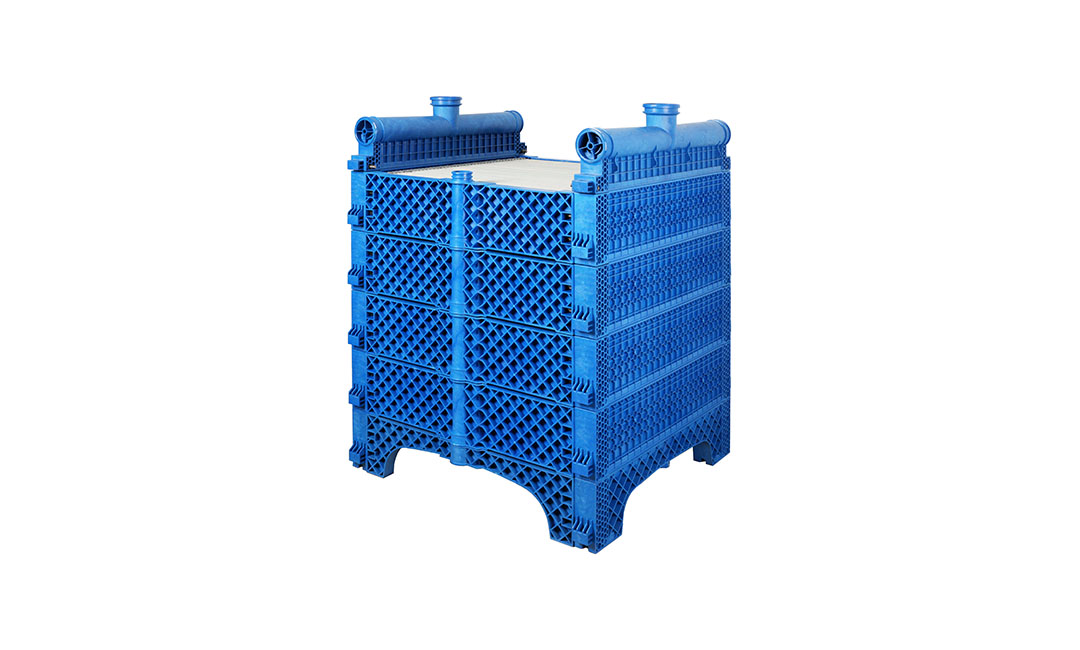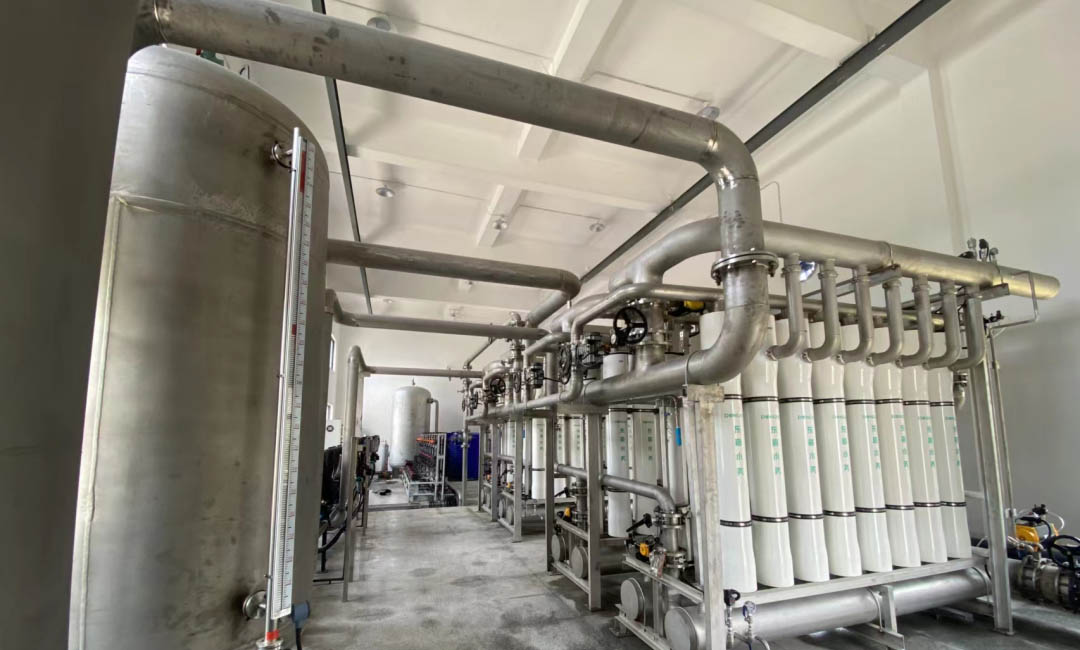Improved Water Treatment Efficiency
Water is a vital resource for various industrial processes, from manufacturing to energy production. However, the treatment of wastewater generated from these processes is a significant challenge that industries face. Traditional wastewater treatment methods often involve multiple steps and are not always efficient in removing contaminants. This is where silicon carbide (SiC) membranes come into play, revolutionizing industrial processes by improving water treatment efficiency.
SiC membranes are a type of ceramic membrane that offer several advantages over conventional polymeric membranes. One of the key benefits of SiC membranes is their high chemical and thermal stability, making them ideal for harsh industrial environments. This stability allows SiC membranes to withstand high temperatures and aggressive chemicals, ensuring long-term performance and durability.
In addition to their stability, SiC membranes also have a high mechanical strength, making them resistant to fouling and easy to clean. This results in lower maintenance costs and longer membrane lifespan, reducing downtime and increasing overall efficiency. The robust nature of SiC membranes makes them well-suited for treating challenging wastewater streams with high concentrations of contaminants.
Furthermore, SiC membranes have a high permeability and selectivity, allowing for efficient separation of contaminants from water. This results in higher water recovery rates and lower energy consumption compared to traditional treatment methods. The high permeability of SiC membranes also enables industries to achieve higher water quality standards, meeting regulatory requirements and ensuring compliance with environmental regulations.
The use of SiC membranes in industrial processes has led to significant improvements in water treatment efficiency. Industries can now treat wastewater streams more effectively, reducing the amount of water discharged into the environment and minimizing the impact on surrounding ecosystems. This not only helps industries meet sustainability goals but also contributes to the conservation of water resources for future generations.
Moreover, the adoption of SiC membranes in industrial processes has led to cost savings for companies. By improving water treatment efficiency, industries can reduce operating costs associated with wastewater treatment and disposal. The long-term durability of SiC membranes also results in lower maintenance costs and fewer membrane replacements, further reducing overall expenses.
Overall, SiC membranes are revolutionizing industrial processes by improving water treatment efficiency. Their high chemical and thermal stability, mechanical strength, and permeability make them an ideal choice for treating challenging wastewater streams in various industries. The use of SiC membranes not only enhances water quality and reduces environmental impact but also leads to cost savings for companies. As industries continue to prioritize sustainability and efficiency, SiC membranes will play a crucial role in meeting these goals and driving innovation in water treatment technologies.
Cost Savings and Sustainability
Wastewater treatment is a critical process in various industries, including manufacturing, mining, and food processing. Traditionally, industries have relied on conventional filtration methods such as sand filters and polymeric membranes to treat wastewater. However, these methods are often inefficient, costly, and not environmentally friendly. In recent years, a new technology has emerged that is revolutionizing industrial wastewater treatment: Silicon Carbide (SiC) membranes.
SiC membranes are made from a material known for its high mechanical strength, chemical resistance, and thermal stability. These unique properties make SiC membranes ideal for treating industrial wastewater, which often contains high levels of contaminants such as heavy metals, oils, and organic compounds. Unlike conventional filtration methods, SiC membranes can effectively remove these contaminants while maintaining a high flux rate and requiring less maintenance.
One of the key advantages of SiC membranes is their long lifespan. Unlike polymeric membranes, which degrade over time and need frequent replacement, SiC membranes can last for several years without losing their filtration efficiency. This longevity not only reduces maintenance costs but also minimizes downtime, leading to significant cost savings for industries.
Furthermore, SiC membranes are highly resistant to fouling, a common problem in wastewater treatment. Fouling occurs when contaminants accumulate on the membrane surface, reducing its effectiveness. With their smooth surface and high chemical resistance, SiC membranes are less prone to fouling, resulting in a more stable filtration process and lower operating costs.
In addition to cost savings, SiC membranes offer environmental benefits. By treating wastewater more efficiently and effectively, industries can reduce their water consumption and minimize their environmental impact. SiC membranes also produce less waste compared to conventional filtration methods, making them a more sustainable choice for industrial processes.

Another advantage of SiC membranes is their versatility. They can be customized to meet the specific needs of different industries, allowing for greater flexibility in wastewater treatment. Whether it’s removing heavy metals from mining wastewater or treating organic compounds in food processing plants, SiC membranes can provide a tailored solution for each application.

Overall, SiC membranes are revolutionizing industrial processes by offering a cost-effective, sustainable, and efficient solution for wastewater treatment. With their long lifespan, resistance to fouling, and environmental benefits, SiC membranes are becoming the preferred choice for industries looking to improve their wastewater treatment processes.
In conclusion, the adoption of SiC membranes in industrial wastewater treatment is a game-changer for industries seeking to reduce costs, improve efficiency, and enhance sustainability. As more industries recognize the benefits of SiC membranes, we can expect to see a shift towards more environmentally friendly and cost-effective wastewater treatment processes in the future.
Enhanced Industrial Process Performance
Wastewater treatment is a critical process in various industries, including manufacturing, food and beverage production, and pharmaceuticals. The traditional methods of treating wastewater often involve the use of chemicals and large amounts of energy, which can be costly and harmful to the environment. However, recent advancements in membrane technology, specifically the development of silicon carbide (SiC) membranes, have revolutionized the way industries approach wastewater treatment.
SiC membranes are a type of ceramic membrane that offer several advantages over traditional polymeric membranes. They are highly resistant to harsh chemicals, high temperatures, and fouling, making them ideal for use in industrial processes where the wastewater may contain contaminants that would quickly degrade other types of membranes. This durability allows SiC membranes to have a longer lifespan and require less frequent replacement, reducing maintenance costs and downtime for industrial processes.
One of the key benefits of SiC membranes is their high filtration efficiency. The unique structure of SiC membranes allows for the removal of particles as small as 0.1 microns, making them highly effective at removing contaminants from wastewater. This level of filtration is crucial for industries that produce wastewater with high levels of pollutants, such as heavy metals, oils, and suspended solids. By using SiC membranes, industries can ensure that their wastewater meets regulatory standards and can be safely discharged or reused in their processes.
In addition to their high filtration efficiency, SiC membranes also offer a high flux rate, meaning they can process large volumes of wastewater in a shorter amount of time compared to other types of membranes. This increased productivity can lead to cost savings for industries by reducing the amount of energy and resources needed to treat wastewater. Furthermore, the high flux rate of SiC membranes can improve the overall efficiency of industrial processes by allowing for faster and more consistent treatment of wastewater.
Another advantage of SiC membranes is their resistance to fouling. Fouling occurs when contaminants in the wastewater build up on the surface of the membrane, reducing its effectiveness and requiring more frequent cleaning or replacement. SiC membranes are less prone to fouling due to their smooth surface and chemical resistance, allowing them to maintain their filtration efficiency over a longer period of time. This resistance to fouling can further reduce maintenance costs and downtime for industrial processes, making SiC membranes a cost-effective solution for wastewater treatment.
Overall, the development of SiC membranes has revolutionized the way industries approach wastewater treatment. Their high filtration efficiency, high flux rate, and resistance to fouling make them an ideal choice for industries looking to improve the performance of their industrial processes. By using SiC membranes, industries can reduce costs, improve regulatory compliance, and enhance the sustainability of their operations. As technology continues to advance, SiC membranes are likely to play an increasingly important role in the future of industrial wastewater treatment.

